Fernando Pescador
Performance Analysis of Optimized Versatile Video Coding Software Decoders on Embedded Platforms
Jun 30, 2022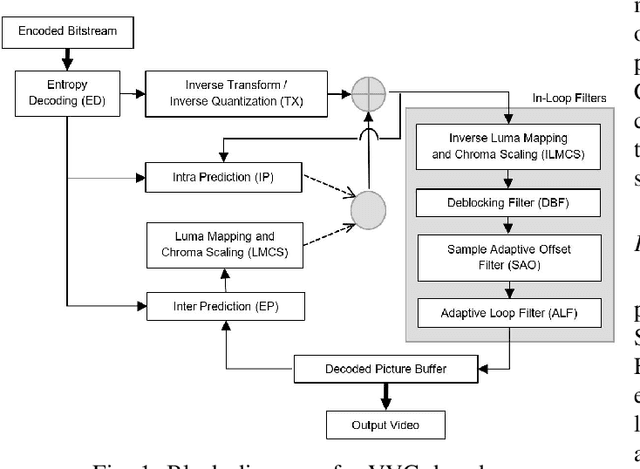
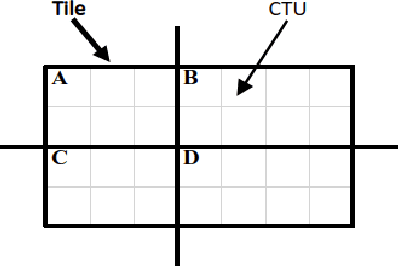
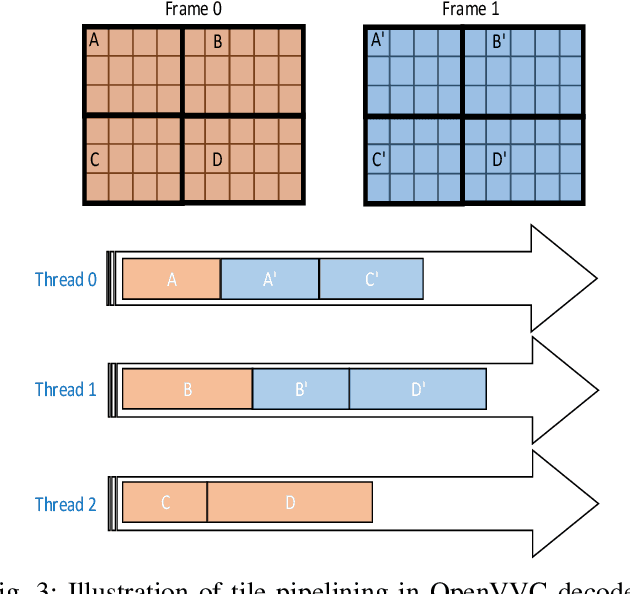
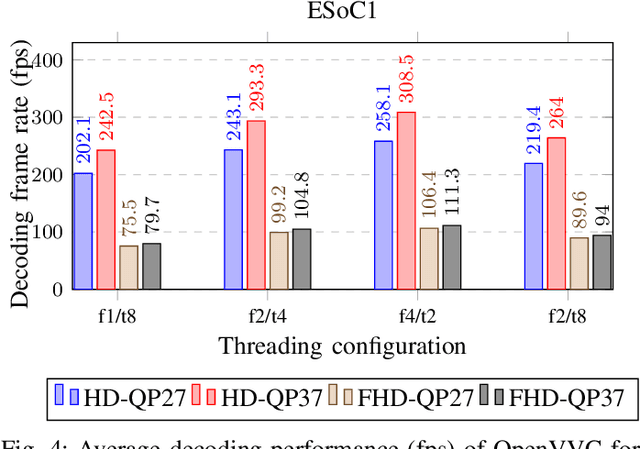
Abstract:In recent years, the global demand for high-resolution videos and the emergence of new multimedia applications have created the need for a new video coding standard. Hence, in July 2020 the Versatile Video Coding (VVC) standard was released providing up to 50% bit-rate saving for the same video quality compared to its predecessor High Efficiency Video Coding (HEVC). However, this bit-rate saving comes at the cost of a high computational complexity, particularly for live applications and on resource-constraint embedded devices. This paper presents two optimized VVC software decoders, named OpenVVC and Versatile Video deCoder (VVdeC), designed for low resources platforms. They exploit optimization techniques such as data level parallelism using Single Instruction Multiple Data (SIMD) instructions and functional level parallelism using frame, tile and slice-based parallelisms. Furthermore, a comparison in terms of decoding run time, energy and memory consumption between the two decoders is presented while targeting two different resource-constraint embedded devices. The results showed that both decoders achieve real-time decoding of Full High definition (FHD) resolution over the first platform using 8 cores and High-definition (HD) real-time decoding for the second platform using only 4 cores with comparable results in terms of average consumed energy: around 26 J and 15 J for the 8 cores and 4 cores embedded platforms, respectively. Regarding the memory usage, OpenVVC showed better results with less average maximum memory consumed during run time compared to VVdeC.
Versatile Video Coding Standard: A Review from Coding Tools to Consumers Deployment
Jun 27, 2021
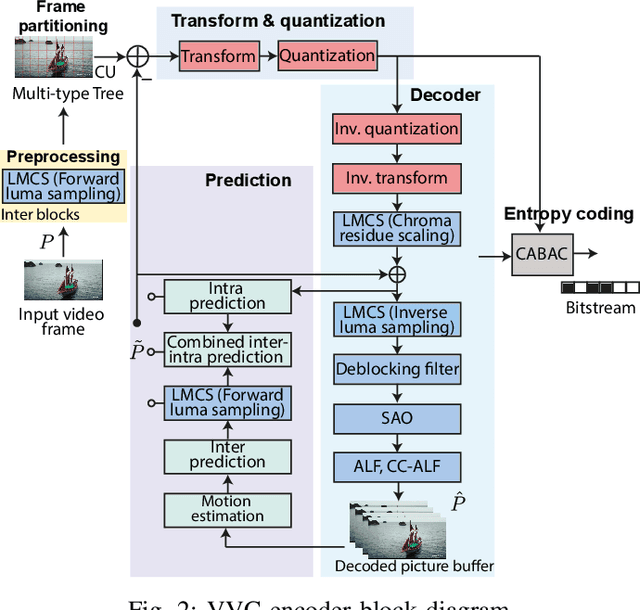


Abstract:The amount of video content and the number of applications based on multimedia information increase each day. The development of new video coding standards is a challenge to increase the compression rate and other important features with a reasonable increase in the computational load. Video Experts Team (JVET) of ITU-T and the JCT group within ISO/IEC have worked together to standardize the Versatile Video Coding, approved finally in July 2020 as ITU-T H.266 | MPEG-I - Part 3 (ISO/IEC 23090-3) standard. This paper overviews some interesting consumer electronic use cases, the compression tools described in the standard, the current available real time implementations and the first industrial trials done with this standard.
 Add to Chrome
Add to Chrome Add to Firefox
Add to Firefox Add to Edge
Add to Edge